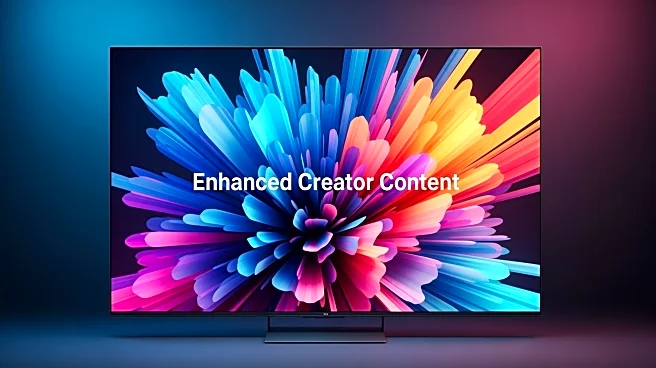What's Happening?
YouTube Premium offers an ad-free experience for users, allowing uninterrupted viewing of videos and access to YouTube Music. The individual plan costs $13.99 per month, with options for annual, family,
and student plans. The family plan, priced at $22.99 per month, allows sharing with up to five family members. YouTube Premium includes features such as background play and offline video downloads, enhancing the user experience. The service aims to provide value to users who prioritize ad-free content and seamless music access.
Why It's Important?
The introduction of YouTube Premium reflects a growing trend towards subscription-based models in the digital content industry. By offering an ad-free experience, YouTube Premium enhances user satisfaction and engagement, potentially increasing the platform's subscriber base. The inclusion of YouTube Music access further adds value, appealing to music enthusiasts who seek uninterrupted playlists. This development may influence other streaming services to offer similar ad-free experiences, impacting the broader digital content industry. The shift may also affect advertising revenue and content creators, prompting discussions on alternative monetization strategies.
What's Next?
As YouTube Premium continues to gain traction, it is likely that more users will opt for the subscription service, especially those who prioritize an ad-free experience. The service's success could lead to further enhancements and features being added to attract new subscribers. Additionally, YouTube may explore partnerships or exclusive content offerings to differentiate itself from competitors. The impact on advertising revenue and content creators will be closely monitored, as the shift to subscription-based models may alter traditional revenue streams.
Beyond the Headlines
The rise of subscription services like YouTube Premium highlights a growing trend towards personalized and uninterrupted digital experiences. This shift raises questions about the future of advertising and its role in content monetization. As more users opt for ad-free services, content creators may need to explore alternative revenue models, such as sponsorships or exclusive content deals. The ethical implications of ad-free viewing, particularly in terms of content accessibility and creator compensation, will continue to be a topic of discussion.











